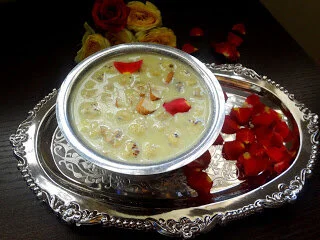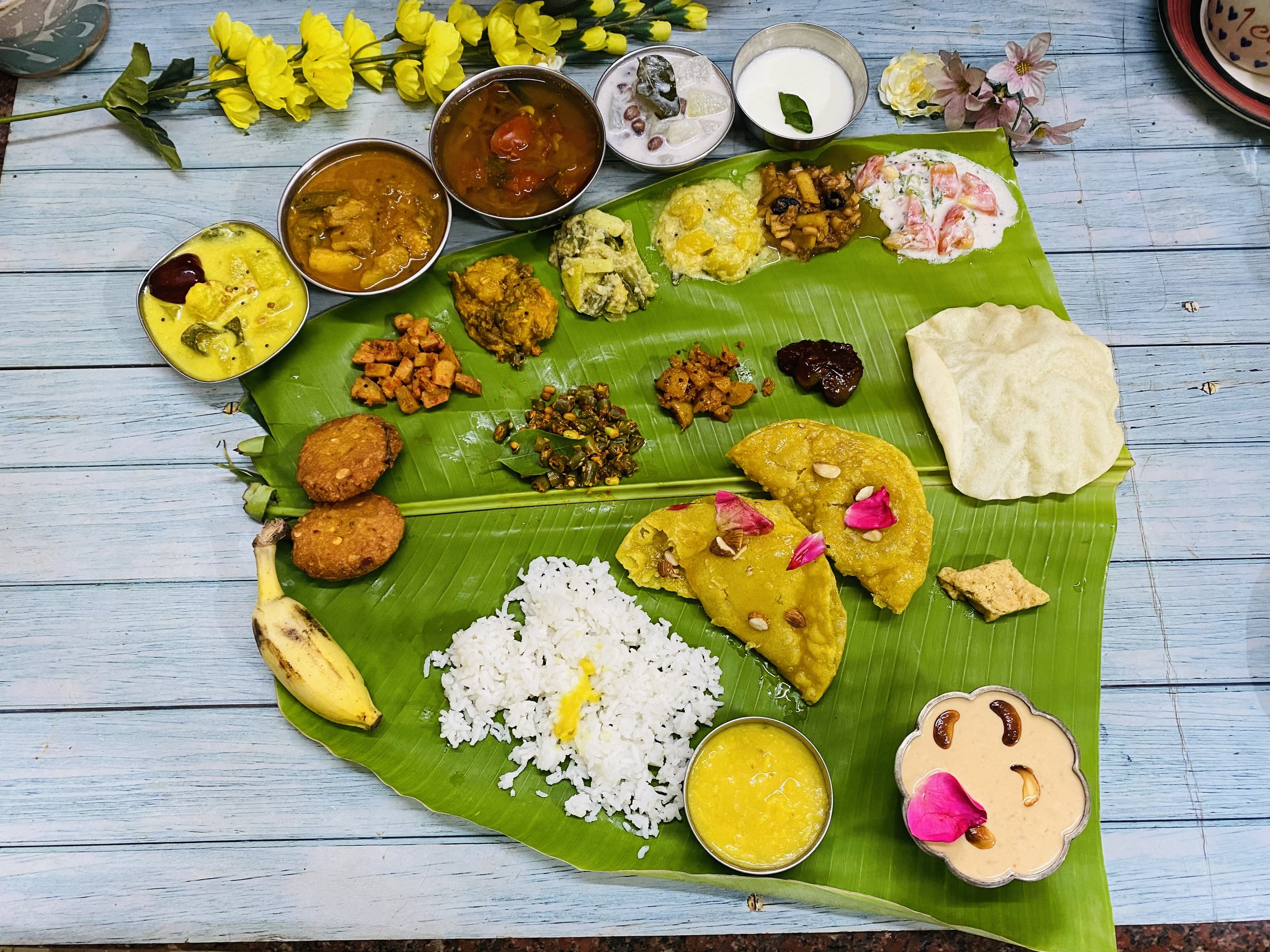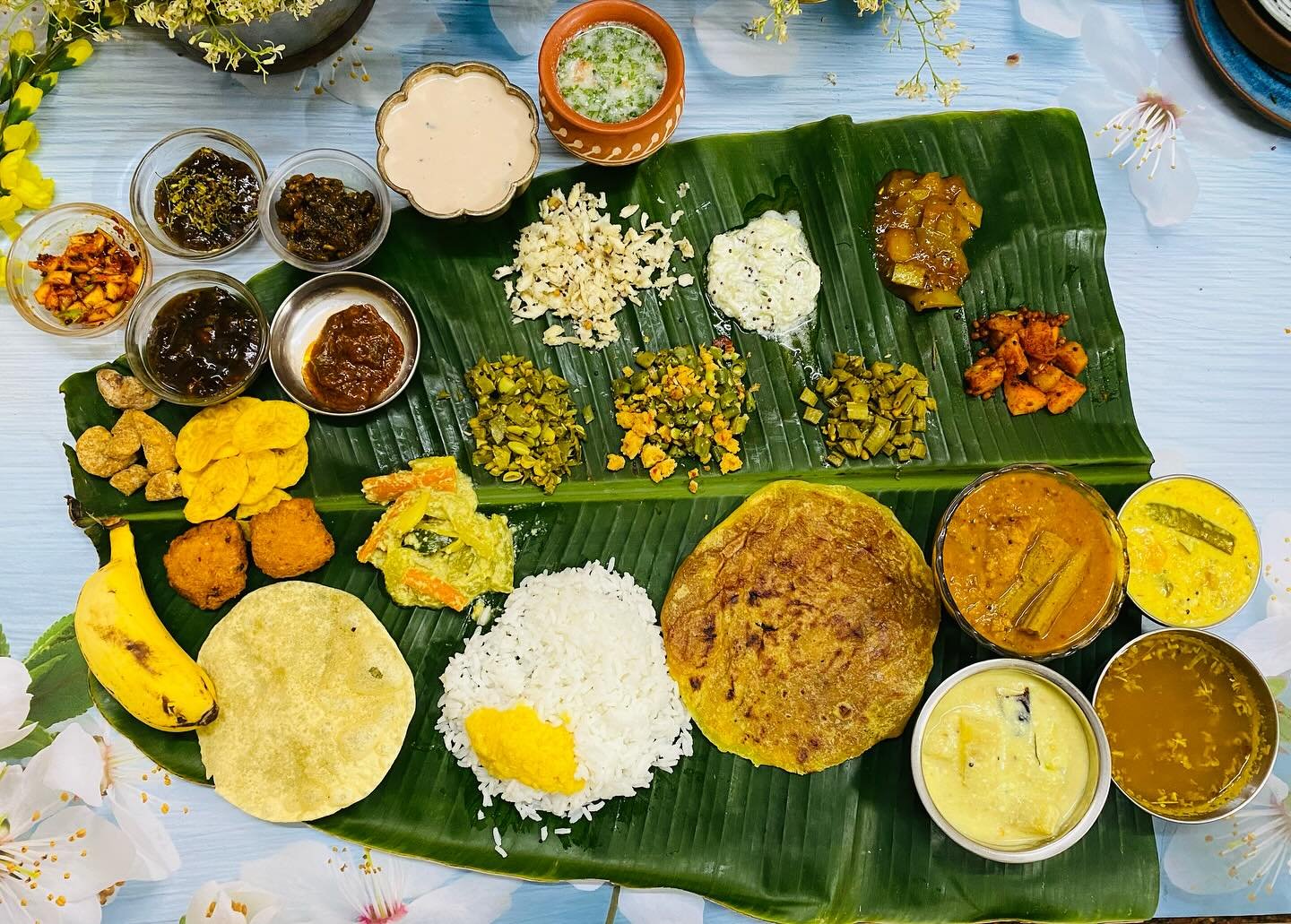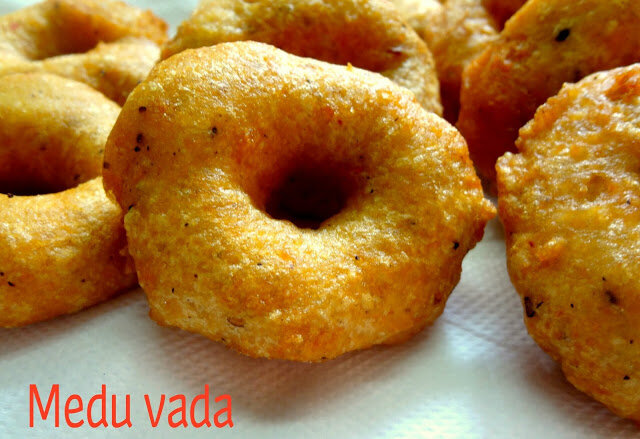Makhane ki Kheer
Makhane ki kheer
Makhana ki Kheer is a luscious and indulgent dessert that captivates the palate with its rich, creamy texture and delightful flavors. This traditional Indian sweet incorporates the unique and wholesome ingredient known as makhana, also referred to as foxnuts or lotus seeds.
The preparation begins with gently roasting the makhana in a touch of ghee until it achieves a light golden hue. This step enhances the nutty aroma and brings out the inherent crunchiness of the makhana. Care is taken to roast them over a low flame to prevent quick browning.
The result is a velvety, aromatic kheer where the whole makhana has absorbed the essence of the simmering milk, creating a harmonious blend of flavors and textures. Whether served warm or chilled, Makhana ki Kheer stands out as a comforting and sumptuous dessert option, perfect for festive occasions or a sweet indulgence to satisfy your cravings.
Makhana, also known as foxnuts or lotus seeds, is a favored ingredient for preparing delectable creamy desserts during Navaratri fasting (vrat).
Opting for Makhane ki Kheer proves to be an excellent selection, not only for its delightful taste but also for its numerous benefits. It serves as a fantastic alternative for individuals seeking a low-fat, low-calorie option during fasting.
Ingredients:
1 cup makhana ( lotus seeds/ foxnuts)
1 1//2 cup low fat milk or skimmed milk
3-4 tbsp sugar or powdered jaggery ( light variety)
A pinch of cardamom powder or nutmeg / cinnamon
2 tsp ghee
1 tbsp cashewnuts or blanched almonds
Some saffron strands soaked in warm milk
Method:
In a pan, melt a small amount of ghee and gently roast the makhana until it reaches a light golden color. Keep the flame on a very low setting, as makhana tends to brown quickly. Allow it to cool.
In a separate vessel or pan, bring skimmed milk to a slight thickening point. Introduce half of the toasted makhana into the simmering milk, reserving the other half for later. Coarsely powder the remaining makhana in a mixer (avoid making it too fine) and set it aside.
As the milk begins to thicken, add sugar or powdered jaggery, along with desired flavors, saffron milk, and the coarsely powdered makhana.
Let the entire mixture gently boil over a very low flame, incorporating toasted cashews or blanched almonds.
The addition of coarsely powdered makhana will contribute to the thickening of the milk mixture, giving it a creamy texture.
Allow the whole makhana to cook thoroughly in the milk. Serve the dish either warm or chilled.
For those less concerned about calories, an alternative is to use milkmaid instead of sugar and milk. Cook the makhana in a small amount of milk, then add condensed milk. While this option is quicker, creamier, and more indulgent, it is also higher in calories—making it a matter of personal preference!
Makhane ki kheer
Makhane ki kheer
More about Makhana and its benefits and uses :
It has carbohydrates, fibre, magnesium, potassium, phosphorus, iron and zinc. Lotus seeds are also low in sodium.Their low sodium and high magnesium content makes them useful for those suffering from heart diseases, high blood pressure, diabetes and obesityFox nuts are lotus flower's seed.It is grown in water and is largely found in India and know as 'Makhana' here. Also found in Korea, Japan and Russia and known as 'Gorgon Nut' there. It is also known as Euryale Ferox.This is an Asian water plant and is mainly cultivated for its edible seeds which look like popcorn.Extracts from different parts of this water plant including its leaves, stems, roots and seeds have been reported to show several benefits, such as antioxidant, free radical scavenging, anti-inflammatory, and immuno-modulatory activities.Makhanas have also been used in religious rituals in India. Interestingly, the lotus seeds are also called fox nut or gorgon nut. However, being low in fat and high in carbohydrates, these are nutritionally distinct from nuts and seeds. Lotus seeds are a good source of protein, carbohydrates, fibre, magnesium, potassium, phosphorus, iron and zinc. Lotus seeds are also low in sodium.Their low sodium and high magnesium content makes them useful for those suffering from heart diseases, high blood pressure, diabetes and obesity. These seeds contain an anti-aging enzyme, which is believed to help repair damaged proteins.Lotus seeds are also known to a natural flavonoid also found in coffee which prevents inflammation and aging. It is believed that roasted lotus seeds make a coffee substitute. In addition, lotus seeds are high on phyto-nutrients.Most significantly, the glycemic index of lotus seed is significantly lower than most high carbohydrate foods like rice, bread and others.It appears that lotus seeds may have a beneficial effect on diabetic individuals, and may be one of the more appropriate foods for them. The seeds can be eaten raw, roasted, or ground and boiled into a syrup or paste.The most common use of the seed is in the form of lotus seed paste, which is used extensively in Chinese pastries as well as in Japanese desserts. Dried lotus seeds may be soaked in water overnight prior to use.They can then be added directly to soups, salads or used in other dishes. Puffed seeds are used in curries, kheer, puddings and dry roasted snacks. .Lotus seeds hold a promising future as an alternate gluten-free protein supplement . Blending its flour with other nutritionally rich legumes like daals and soybean or millets like bajra and jowar will be of immense value .Hence, introduce the ‘makhana’ snack food in your regular diet for that healthy edge.
Browse through My Instagram feed . Follow me in Instagram


























